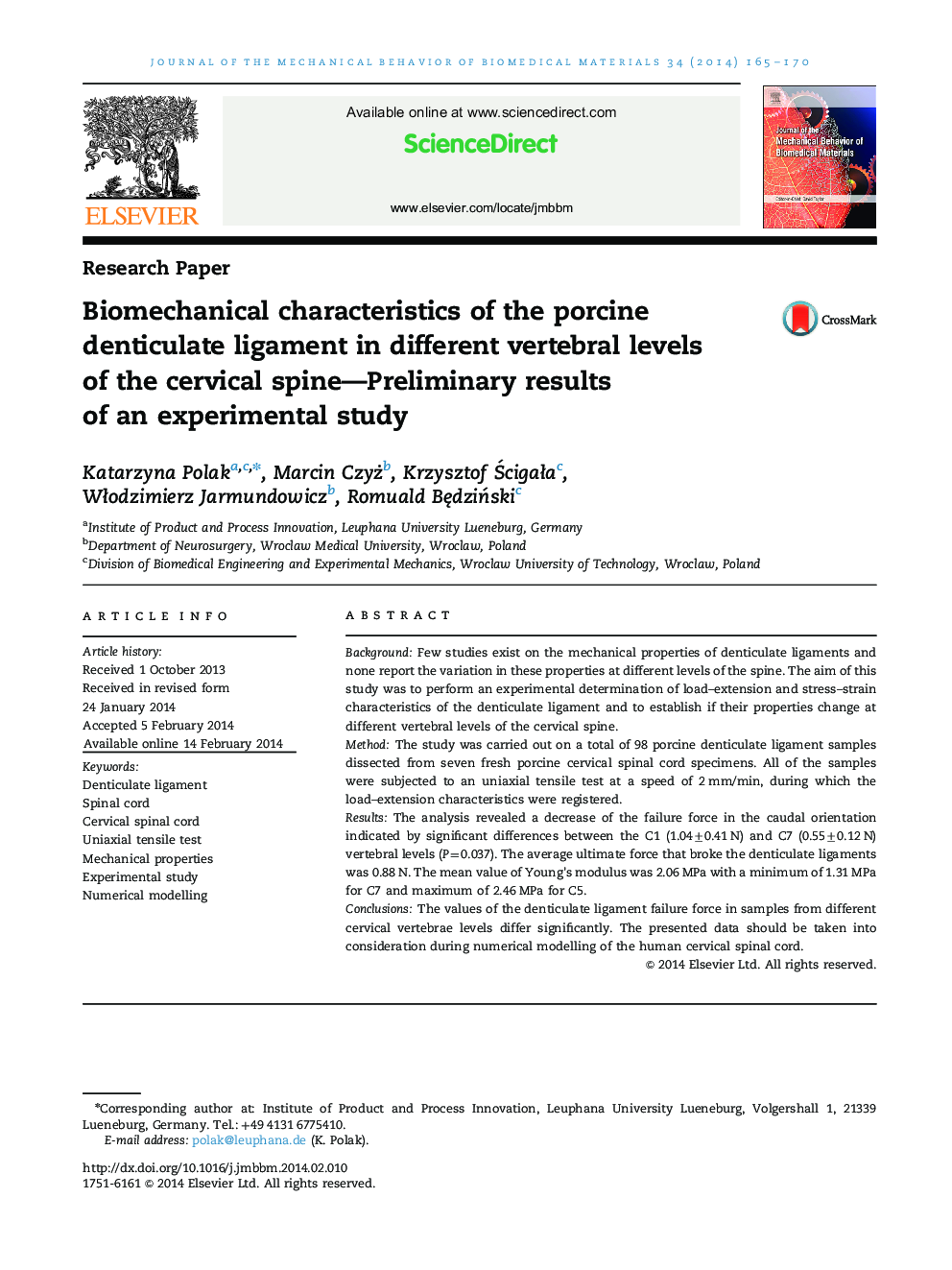| Article ID | Journal | Published Year | Pages | File Type |
|---|---|---|---|---|
| 810762 | Journal of the Mechanical Behavior of Biomedical Materials | 2014 | 6 Pages |
•Denticulate ligaments take part in stabilisation of the spinal cord.•We perform tensile test of ligaments at different porcine cervical vertebral levels.•Failure force of ligaments from more cranial vertebrae levels is larger.•Our results are important for full understanding of spinal cord biomechanics.
BackgroundFew studies exist on the mechanical properties of denticulate ligaments and none report the variation in these properties at different levels of the spine. The aim of this study was to perform an experimental determination of load–extension and stress–strain characteristics of the denticulate ligament and to establish if their properties change at different vertebral levels of the cervical spine.MethodThe study was carried out on a total of 98 porcine denticulate ligament samples dissected from seven fresh porcine cervical spinal cord specimens. All of the samples were subjected to an uniaxial tensile test at a speed of 2 mm/min, during which the load–extension characteristics were registered.ResultsThe analysis revealed a decrease of the failure force in the caudal orientation indicated by significant differences between the C1 (1.04±0.41 N) and C7 (0.55±0.12 N) vertebral levels (P=0.037). The average ultimate force that broke the denticulate ligaments was 0.88 N. The mean value of Young׳s modulus was 2.06 MPa with a minimum of 1.31 MPa for C7 and maximum of 2.46 MPa for C5.ConclusionsThe values of the denticulate ligament failure force in samples from different cervical vertebrae levels differ significantly. The presented data should be taken into consideration during numerical modelling of the human cervical spinal cord.
